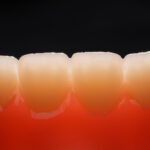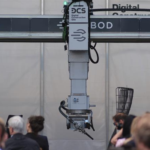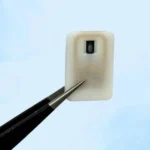The U.S. Navy is turning to additive manufacturing as a critical solution to address challenges in maintaining and expanding its submarine fleet. With an industrial base described as “exceptionally fragile” by key officials, the Navy is calling on industry partners to embrace 3D printing to ensure faster production and maintenance of submarine components.
“We need your help. We don’t have a choice. Time is not on our side,” said Rear Admiral Jonathan Rucker, Program Executive Officer for Attack Submarines (PEO-SSN), during the Naval Submarine League conference. His remarks underscored the urgency of adopting new manufacturing techniques to bolster an overworked fleet and rebuild the industrial base.

Additive Manufacturing for Submarine Maintenance
Additive manufacturing, commonly known as 3D printing, has been utilized for years in producing small, non-critical plastic components such as safety covers and cable connectors. However, the Navy is now scaling up its efforts to include large, high-strength metal parts.
Vice Admiral Robert Gaucher, commander of Naval Submarine Forces, highlighted the progress made this year. The Navy installed eight 3D-printed metal parts on submarines in 2024, a significant increase from just two the previous year. For the overhaul of the USS Michigan in 2025, the Navy plans to include 33 3D-printed components.
“Delivering these parts will be faster than traditional casting,” Gaucher stated, emphasizing the role of 3D printing in mitigating supply chain delays. He also pointed to regional maintenance centers as key beneficiaries of this technology, improving the efficiency of submarine repairs.
Advancing Submarine Construction with 3D Printing
Beyond maintenance, the Navy envisions additive manufacturing as a transformative force in submarine construction. Matt Sermon, Executive Director of PEO-Strategic Submarine, called metallic additive manufacturing the Navy’s “Manhattan Project” for revitalizing its industrial base.
Traditional casting processes for submarine components are time-intensive, requiring years of machining to smooth out imperfections. In contrast, Sermon explained, additive manufacturing could produce these parts with superior quality while reducing time and labor costs. His team has already produced a 3,300-pound metal part using 3D printing, with testing underway to ensure it meets stringent standards.
The Navy is also exploring the feasibility of using additive manufacturing for massive hull sections, currently achievable only through casting. “I see a world, not science fiction … but in the relatively near term, where we’ll be able to print submarine hull and ship modules,” Sermon remarked.
Collaborating with Allies and Industry
The Navy is urging both domestic and international industry partners to embrace 3D printing innovations. The AUKUS alliance—comprising the U.S., Australia, and the United Kingdom—is seen as a vital part of this effort.
“We want to do it with our partners,” Sermon emphasized. “We absolutely want their industrial base [using] a 2030s model … not a 1970s industrial base.”
Australian additive manufacturing firm AML3D has already joined the Navy’s research initiatives. Rear Admiral Rucker confirmed progress on their contributions, with engineering drawings advancing toward approval.
Progress and Challenges Ahead
While the Navy has made strides in reconstructing its industrial capabilities, challenges remain. Admiral Bill Houston, director of the Navy Nuclear Propulsion Program, described the current state as a race to catch up after years of neglect. Following the post-Cold War decline in submarine production, the industrial base is now less than half its former size.
Nonetheless, recent achievements, such as increasing the number of qualified casting vendors and integrating 3D printing into production, signal progress. Rucker noted that casting bottlenecks, once a significant issue, have largely been resolved with contributions from international partners.
Additive manufacturing is now poised to further accelerate production timelines, reduce costs, and enhance the quality of components critical to the Navy’s strategic goals.
Source: breakingdefense.com









